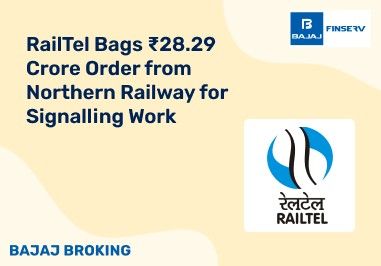What is a Long Call?
Are you struggling to understand what is a long call? A long call is a standard call option. In this type, the trader is the buyer who purchases the right to buy a stock at a strike price. In order to buy the right, the trader pays a premium to the seller. However, the trader is not obliged to purchase the stock at the defined strike price.
Long call option is purchased by traders when they expect a rise in stock prices. Let's make it more clear with an example:
Ritwik is a full-time trader and he is willing to purchase a long call. Ritwik purchased a long call option for 50 shares of XYZ company by paying a Rs.1000 premium at a month expiration date. The strike price for these 50 shares is set at Rs.150 per share. Now, Ritwik is the option holder and has the right, but is not obliged, to sell the stocks if the price increases and crosses the strike price.
Now, there could be two possibilities after this:
Within a few days, the stock price increases and goes as high as ₹220 per share. So, Ritwik decides to purchase the stocks at ₹220 per share. In this case, the option holder (Ritwik) makes a profit of ₹70 per share.
So, the stock profit of Ritwik is ₹70*50= ₹3500. Since Ritwik paid a premium of ₹1000 to purchase the right, his net profit will be ₹3500- ₹1000= ₹2500.
If the stock price does not increase as anticipated and rather witnesses a downfall, Ritwik will suffer a loss.
Suppose the stock price falls down to ₹100, which is below the strike price of ₹150, there will be a loss. Now, since the price couldn't beat the strike price, Ritwik will choose not to purchase stocks at a loss since he is not obliged to do so.
Since Ritwik paid a ₹1000 premium in return for rights, the maximum loss he will incur is a ₹1000 premium amount.
So, the maximum loss in the long call is the premium amount paid and the maximum profit is unlimited.
What are Short Calls?
Short calls, on the other hand, are the opposite of long calls. In the short call option, the trader is the seller who bets on the price decrease of shares. Short call options can be naked (where a trader does not own shares) or covered (where traders own shares). Here, the traders expect a decrease in stock price while the other party bets on the price increase.
In the short-call option, the trader is obliged to purchase stocks if the sale is executed by the other party. Here is an example for more clarity on what is a short call:
Ridhima is expecting a stock price decrease for ABC company. So, in the bearish market, she purchases a short call for the same. Ridhima purchases a short call option at a strike price of ₹1000 for ABC company at a premium of ₹120. The current market Nifty is at ₹1094.
Now, there could be two possibilities:
The first possibility is that the market remains bearish and the price does not increase. If the price does not beat the strike price of ₹1000, Ridhima will make a profit of the entire ₹120 premium. In this case, the long call trader will lose the premium amount they paid.
On the other hand, if the market does not move as per Ridhima’s calculations, she will face a loss. If the price increases and passes the strike price of ₹1000, Ridhima will bear a loss. The long-call trader will execute the sale and Ridhima will be forced to purchase the stocks at the current price and hand them over to the long-call trader at a lower price.
So, the possibility of maximum profit in a short call is the premium and maximum loss is unlimited.
Additional Read: Call and Put Options: Meaning, Types & Examples
Key Differences Between Long Call vs Short Call
The long call is performed with the expectations of a bullish market while a short call is performed when traders expect a bearish market. Still unclear? Here is a table below that can help you understand the differences between long calls and short calls:
Long Call Option
| Short Call Option
|
Long call represents an expectation of a bullish market
| The short call represents an expectation of a bearish market
|
The trader has the right but is not obliged to execute the sale
| The trader is obliged to execute the sale if the other buyer executes the trade
|
The trader is in the buyer's position
| The trader is in the seller's position
|
Potential profit is unlimited
| Potential profit is limited to the premium
|
Potential risk is limited to the premium paid
| The potential risk is unlimited
|
Makes profit when the stock prices increase beyond the strike price
| Makes a profit when the stock price remains below the strike price
|
Features of Long Call vs Short Call
Here are the features of a long call at a quick glance:
Long-call options are bullish in nature. The trader is expecting an increase in stock prices beyond the strike price.
The trader plays the role of buyer and has the right to execute a trade if the price increases beyond the strike price. However, the trader is not obliged to do so
The traders pay the premium amount and set a strike price for their chosen stocks.
The maximum loss that the trader will have to bear is the loss of premium
The potential to gain profit is unlimited, especially when the stock prices keep increasing.
Now, let's have a look at the features of short-call option trading:
Short calls trading indicates that the trader is expecting a decrease in the stock price
In short calls, the trader believes that the stock prices will not be at the strike price but remain below or stagnant
The trader here plays the role of a seller
If the stock price hits the strike price and increases, the trader is obliged to purchase stocks at a higher price and sell them to the long-call trader at a lower price.
The potential losses in the short selling are unlimited since the price may keep increasing.
The profit-making in a bearish market is limited to the premium of the stocks.
If the stock prices remain at a stagnant position or below the strike price, the trade becomes worthless and the trader will benefit from the stock premiums.
Impact of Long Call vs Short Call in Financial Markets
According to the experts, call option trading can have market effects. While some believe that a short call option is a positive for the market, some are of the opposite opinion. On the other hand, long-call options can be beneficial for traders and companies. It can help companies grow with increased market valuations.
Some experts believe that short-call options put the companies under pressure. It can also allow traders to benefit from the losses of others, thus exacerbating market downturns. Some experts believe that short-call options bring into light the companies that have overvalued stocks and bring them down to their true value. Also, short selling can add more liquidity to the market.
Additional Read: Difference Between Demat and Trading Account
Pros and Cons of Long Call vs Short Call
Long calls vs short calls can have multiple pros and cons. Here we have a quick list presenting the advantages and drawbacks of long calls and short calls:
Profit is unlimited once the stock price increases beyond the strike price
Loss is limited to the premium paid
New traders can still have safe trading with long-call options
The trader can sustain a loss if the stock price does not hit the strike price.
Your stock may experience time decay, especially when the expiration date is nearing.
Short calls can benefit if the stocks become worthless
Towards the expiration date, it is highly likely for traders to benefit from short selling if the price has yet not increased
Conclusion
Options trading requires an in-depth understanding of the market, especially when opting for a short-call option. Once you have properly understood long call vs short call, only then make a choice for options trading. It is always advisable for a new trader to perform virtual trading for a while before entering the actual market.
Make sure to stay updated on the national and international news so you can make a better decision during market hours. Shielding against losses in a long call can be possible but in a short call, losses can be unlimited. So, it is always best to analyse market trends, past news, global politics, and current market prices to make the best judgment!
Disclaimer: Investments in the securities market are subject to market risk, read all related documents carefully before investing.
This content is for educational purposes only. Securities quoted are exemplary and not recommendatory.
For All Disclaimers Click Here: https://bit.ly/3Tcsfuc













